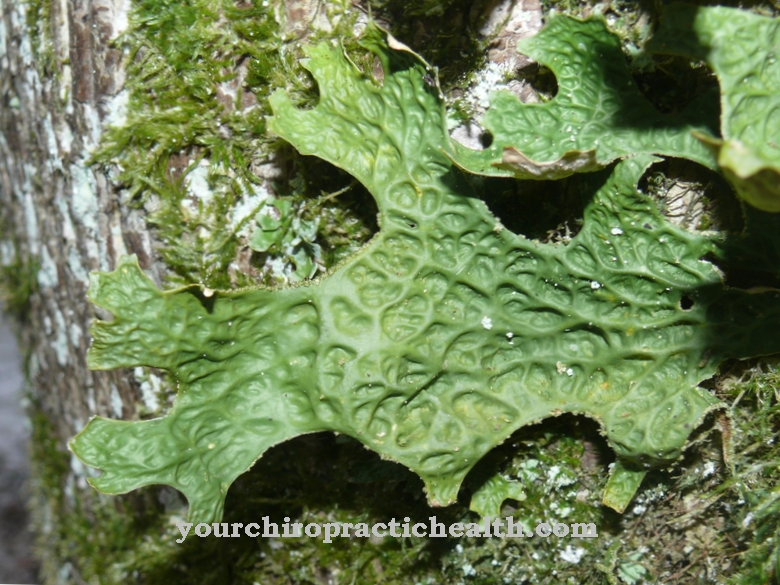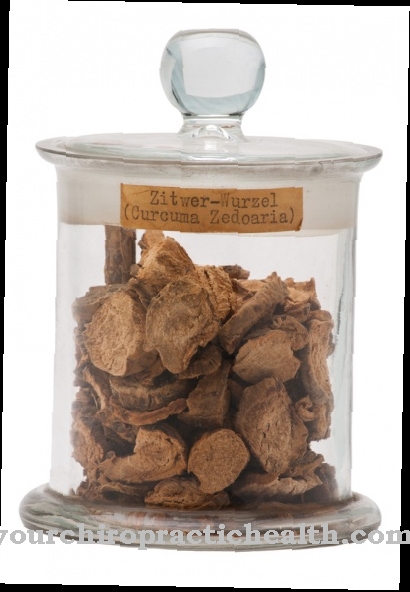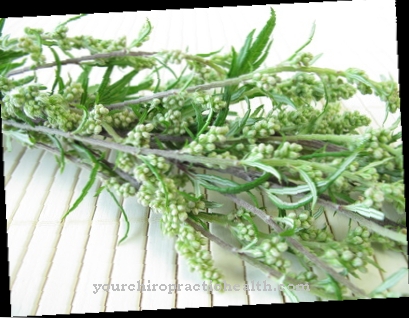The Rowanberry is also under the name rowan known. It is rumored that the fruits are poisonous. But that's not true. However, some varieties have a high content of bitter substances, which limits the use of the berries. Because of these bitter substances and other ingredients, rowanberries are also very suitable for medicinal use in various areas.
Occurrence and cultivation of rowan berries

The Rowanberry is a deciduous tree up to 15 meters high. Growth forms as a shrub, for example through new shoots after the main trunk has been removed, are also common. The white flowers, which appear from May to July, develop into fruits that, when ripe, turn a bright red color in autumn. From a botanical point of view, the fruits are not berries, but apple fruits.
On closer inspection of the fruits, this similarity is clearly noticeable. They reach a size of about one centimeter and are a very good feed for wild animals: Birds find the fruits hanging on the bush well into winter. The rowan tree owes its name to the popularity of the fruit with wild birds. The name mountain ash, on the other hand, goes back to the name "Aberesche", that is, false ash.
This indicates the similarity of the leaves on these two trees. However, they are not related to each other. With a few exceptions, the rowanberry is widespread throughout Europe. But it can also be found in North America and North Asia. Compared to the soil it is undemanding: it thrives on nutrient-poor or nutrient-rich, acidic or basic as well as dry to moist soils. It is often used in landscaping as a single or avenue tree.
Effect & application
The medicinal use of rowan berries results from their ingredients. Bitter substances are generally considered to be beneficial for supporting the digestive system. In folk medicine, the rowanberry is therefore a good remedy for biliary complaints. Both a tea and a jam or jelly made from the berries can be used for this.
It is important that the fruits are well cooked before consumption: they contain a slight poison that can lead to stomach problems if consumed in large quantities. Cooking breaks this poison down into a more tolerable form. In addition, the bitter taste is softened a little. In general, the less bitter varieties, such as Moravian rowan berries, should be used for processing in the kitchen, as these are tastier and more digestible.
If the berries are collected themselves, one or the other fruit can also be tasted. Above a certain amount, these have a laxative effect, but there are no further health risks to be feared. The laxative effect of fresh rowan berries is also used in folk medicine: it is a mild laxative for constipation. A pressed juice from fresh berries can also be used here. The dried fruits are completely different: these are used as home remedies for diarrhea.
A diuretic effect of the fruits is also often described and can be used as a home remedy. But not only the fruits of the rowanberry are used in folk medicine. Leaves and flowers also have a healing effect, especially against coughs and bronchitis. The berries also have an expectorant effect. However, when using it, attention should be paid to the laxative effect already described and not too many fruits should be consumed at once.
A tea made from leaves and flowers can be used as a supportive agent for gout and rheumatism. A freshly squeezed juice from rowan berries mixed with honey is said to have a healing effect on pneumonia. Rowan berries also contain a lot of vitamin C and were previously used to prevent scurvy. Even today, this mode of action can be used to support the body's own immune system, especially in the cold season.
In addition, the fruit has a bactericidal effect, which helps recovery from mild infections. Another ingredient that is abundant is carotene. Among other things, this has positive effects on the complexion. The rowanberry is not only used in folk medicine. An extract can be injected to reduce intraocular pressure in glaucoma.
Importance for health, treatment & prevention
Even if the rumor about the toxicity of the fruits persists, the rowanberry is a good medicinal plant for the treatment of various ailments and for prevention. It does not need to be processed into real medicine. Used as a preventive measure, jellies, jams or juices represent a tasty enrichment of the menu with an additional health-promoting effect.
Even if the rowanberry has lost its importance in classical medicine due to the introduction of synthetically produced drugs, it is worth trying self-treatment for minor illnesses. Apart from the effects described, which vary depending on the type of processing, no side effects are known. As with all home remedies, the following also applies here: If there is no improvement after a certain time or a more serious illness is suspected, a doctor should be consulted.
When using the fruits, the kernels should be removed beforehand or at least care should be taken to ensure that they are not damaged during processing. They contain poisonous hydrogen cyanide. The rowanberry is also important in modern medicine because it can be used as an extract to lower intraocular pressure.



























